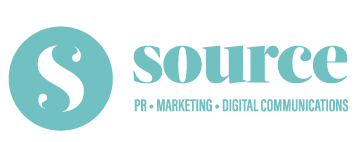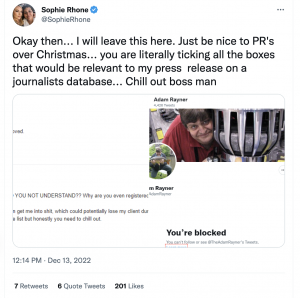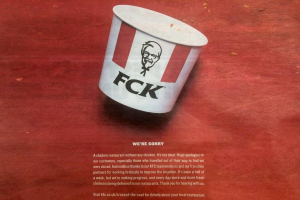When’s It Time To Hire Help For Your Social?
It’s often said that managing social media is like making a cocktail, anyone can do it but not everyone can do it well. Doing social media effectively, effort and knowledge of the platforms so here we outline some tips for businesses who think they might be ready to get some additional help with their social.
If you or your senior team members are spending more time on social media then on the jobs they excel at, then, it may be time for you to hire help for your social.
If your business is growing but your social media pages don’t quite match up to that, it may be time for you to hire help for your social.
If you’re finding it hard to keep up to date with all the ongoing social media trends, it may be time for you to hire help for your social.
And… If you don’t have any social media at all but want to get your name out there in the digital, then we think it’s definitely time for you to hire help for your social.
What Should You Look For?
When looking to choose a social media agency, we would suggest that you consider the following checklist:
- Specialist experts – Do they have dedicated experts available to support and understand your businesses aims and objectives as well as having knowledge of the platforms you are looking to use? Social media platforms are constantly changing and updating to ensure users get the right experience. Your team needs to be ahead of the curve so your brand is able to cut through and stand out.
- Do they know your industry? Do they understand the sector you work in or are they willing to learn? You may not want to hire a social media agency that is handling a competitor’s account but it is useful if they understand the sector and have some experience in it. If that’s not possible to find the right fit, it’s important to have a team that has the right attitude to learning and can support you with real and relevant advice.
- Do they have the right tools? It’s not just about creating engaging posts, it’s about working efficiently, monitoring the channels and tracking engagement. Whether scheduling posts, creating graphics or improving video or images – make sure they have the right tools of the trade to make social media management as efficient and effective as possible.
- Are they on hand to react? Social media can change quickly, whether reacting to a negative issue or boosting viral content, the team needs to be on hand and responsive. Although posts may be scheduled a week in advance, the best teams are those who are also able to react to opportunities or trends that present themselves.
- Do they plan and are they proactive? The social media agency needs to take the time to understand your business so they can be creative and plan effective campaigns. Have a team that selects the trends, offers creative suggestions and advice, and delivers on a weekly basis. As always, we advise being on the front foot with communications.
- Check their track record. When looking for a social media agency, ask for some case studies that show the work that they do or even their own social media accounts. A good social media agency should be more than willing to share their successes.
Why Getting Help is Important
But why is it so important to get your social media right?
Social media offers businesses an unparalleled opportunity to reach and engage with audiences wherever they may be. But first, you must understand who your audiences are and where they are found.
Taking a brief look at the demographics of each social media platform will help a business choose which platform is right for them.
Facebook is still one of the largest platforms amongst marketers and consumers, accounting for nearly 60% of Meta’s income compared to Instagram. However, the platforms continue to evolve and amongst younger users Snapchat and TikTok are now the predominant channels.
Instagram has reportedly more than 2bn users, with 30% being made up for the 18-24 age group with the average user spending more than half an hour on the platform each day. Although the platform may be feeling pressure from TikTok, its decision to push Reels and short videos has reinvigorated and increased the platform’s engagement levels.
Instagram is increasingly being used as a gateway to support e-commerce and nearly 60% of businesses aim to use the platform for this purpose in the next 12 months (already more than $43bn was spent via the platform last year).
TikTok is growing and growing quickly, particularly amongst the slightly younger audience. The site is also accessed by users daily with an average of 45 minutes spent on the site each day. As the site ‘matures’ we’re likely to see it become more business orientated and as the users age with the platform we may see further changes to the video format and content used.
There is much change happening at Twitter and this is likely to continue until the company’s leadership decides in which direction to take the business. It is however still a powerful platform and remains the space to be if wanting to discuss breaking news or to share opinions and thoughts. More than a third of Twitter users have been to university and the platform is increasingly attracting a high-earning and well-educated base.
For B2B clients, LinkedIn remains the premier platform with more than 930m users worldwide. It remains predominantly male (57%) and has a slightly older demographic, with a third aged between 30 and 39. It is however a highly engaged platform with two-thirds (63%) accessing the platform each week and nearly a quarter (22%) accessing daily.
There are numerous other platforms to consider whether Snapchat, Pinterest or others but when working with a social media agency they should also help spend time understanding your audiences and how best to engage with them. This can include an audit of existing platforms and an action plan to take the business forward to capitalise on the opportunities.
If you’re looking to choose a social media agency, get in touch and let us walk you through the world of social media and how together we can build engagement, awareness and opportunity for your business.






